History
The palace dates back to the 15th century and bears the coat of arms of the Adorni counts on its cantonment. In the 19th century, the Adorni Braccesi family had it considerably remodelled. [1]
The façade is characterised by four orders. On the ground floor it presents a solid rusticated rustic (projecting) type, above a smooth plinth, with three round-headed portals, framed by large stone bosses arranged in a diamond pattern. Beyond the string-course cornice is the first row of windows with architrave. The second floor has a graffito-painted frieze between the stringcourse and the stringcourse, with five windows similar to those on the first floor. The top floor has a simpler frieze at the base, frameless openings and an upper frieze with palmettes and plant elements. The whole is crowned by an eaves cornice with sculpted corbels. On the sides, the corners are highlighted by the slightly protruding smooth ashlar. [2]

Villa del Poggio Imperiale is a predominantly neoclassical former grand ducal villa in Arcetri, just to the south of Florence in Tuscany, Central Italy. Beginning as a villa of the Baroncelli of Florence, it was seized by the Medici, became the home of a homicidal and unfaithful husband, and a lavish retreat for a Grand Duchess with imperial pretensions. Later given to Napoleon's sister, it was reclaimed by the hereditary rulers of Tuscany before being finally converted to a prestigious girls' school. During its long history, it has often been at the centre of Italy's turbulent history, and has been rebuilt and redesigned many times.

The Palazzo di Propaganda Fide is a palace located in Rome, designed by Gian Lorenzo Bernini, then Francesco Borromini. Since 1626, it has housed the Congregation for the Evangelization of Peoples and since 1929 is an extraterritorial property of the Holy See. The complex includes a dormitory and chapel as well.

Palazzo Gherardi is a 15th-century building in the Santa croce quarter of Florence, Tuscany, in central Italy. Its main façade is on Via Ghibellina 88, while to the right it faces Via dei Pepi.

Palazzo Balbi is a palace on the Canal Grande, Venice, northern Italy. It is included in the sestiere (quarter) of Dorsoduro, to the right of Ca' Foscari. Currently it is the seat of the President of the Veneto region and of the regional council.

Palazzo Belloni Battagia is a palace on the Canal Grande, Venice, northern Italy. It is located in the sestiere (district) of Santa Croce, between the Fondaco del Megio and Ca' Tron, near the church of San Stae.

Palazzo Capponi alle Rovinate is a late-Gothic and early Renaissance-style residential palace located on Via de' Bardi in Florence, region of Tuscany, Italy. There are apparently three other palaces once associated with the Capponi family:

The Palazzo dell'Arte dei Beccai or Residenza dell'Arte dei Beccai is a fourteenth-century building in Florence, Italy. It faces the Orsanmichele, once a grain market, later the church of the guilds of Florence. It has had many occupants, including the Arte dei Beccai or guild of butchers from which its name derives. Since 1974 it has housed the Accademia Fiorentina delle Arti del Disegno, an academy of the arts.
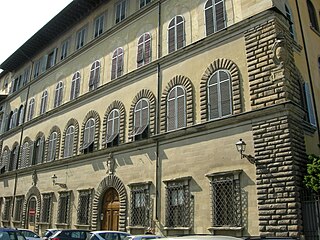
The Palazzo Torrigiani Del Nero is a Renaissance-style palace located at Piazza de' Mozzi 5, down the street where the Ponte alle Grazie enters the Oltrarno in Florence, Tuscany, Italy. Another Palazzo Torrigiani stands alongside, the smaller Palazzo Nasi. Both palaces also once belonged to the Nasi.
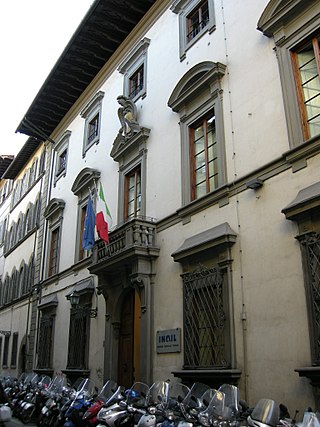
The Palazzo Compagni or Palazzo Cresci is a palazzo on via Bufalini in Florence.

Palazzo Sacchetti is a palazzo in Rome, important for historical and artistic reasons.

Palazzo Bezzoli, or Del Bembo or Martelli, is a civic building in the historical centre of Florence, located between via dei Cerretani 11r-13r-15r-17r-19r and piazza dell'Olio 3. The palazzo appears in the list drawn up in 1901 by the General Directorate of Antiquities and Fine Arts, as a monumental building to be considered national artistic heritage (Italy).
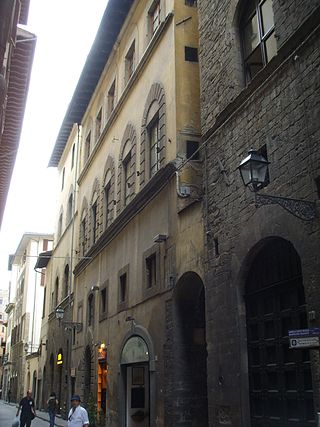
The Casa Acciaiuoli was one of the Acciaiuoli family's palaces in Florence, located at Borgo Santi Apostoli 10 corner Chiasso Cornino 1r.

Palazzo Acciaiuoli, also known as Palazzo Usimbardi' or Usimbardi-Acciaiuoli, is located in Borgo Santi Apostoli in the historical centre of Florence. It incorporates the older Torre degli Acciaiuoli, formerly dei Buondelmonti, located at the corner of Chiasso delle Misure. Today it houses a hotel.
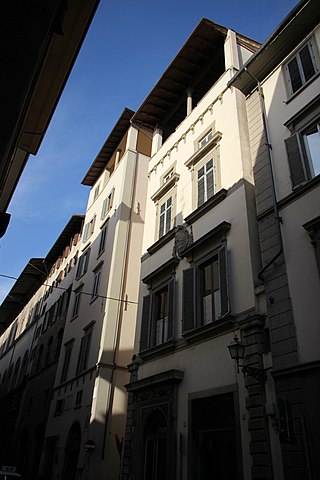
Casa Carlini is a historical building in Florence, located in via de' Pandolfini 33 corner via del Proconsolo 12r-14r. It was the seat from 1497 of the stamperia Giunti.
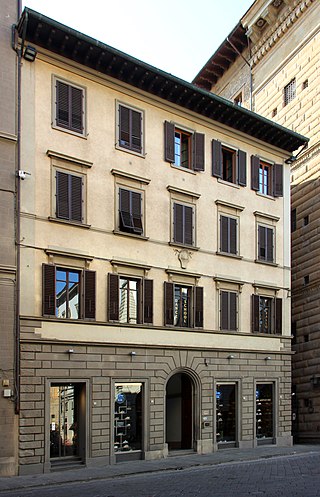
Palazzo Adorni is a building in the historical centre of Florence, located at Piazza degli Strozzi 5.
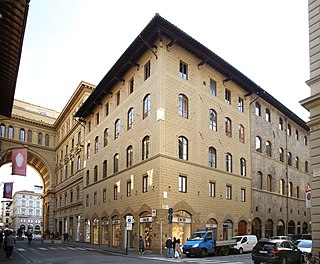
Palazzo Anselmi Ristori is a building in the historical centre of Florence, located between via de' Sassetti 6 and via degli Strozzi 9r-11r-13r-15r-17r-19r.
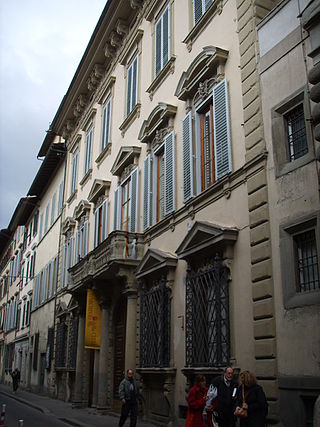
Palazzo Bastogi is located at Via dell'Oriuolo 33 in Florence. It houses the Historical Archive of the City of Florence. The palazzo appears in the list drawn up in 1901 by the General Directorate of Antiquities and Fine Arts as a monumental building to be considered.
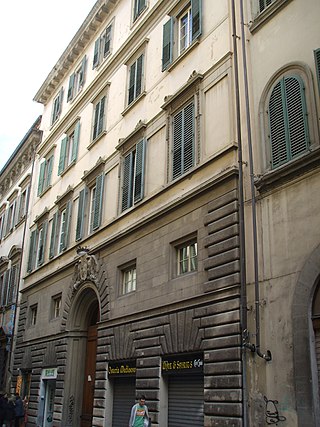
Palazzo Borghese-Aldobrandini is a building in Florence, located at via Ghibellina 123.

Palazzo Caccini is located in Florence at Borgo Pinti 31–33, on the corner of Via Nuova dei Caccini.
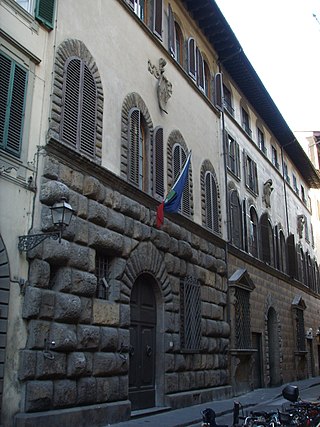
Palazzo Neroni is a historic building in the centre of Florence, located at via de' Ginori 7, with a rear entrance also at via della Stufa 4r-6r.

























